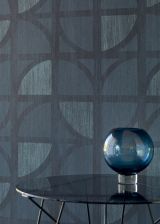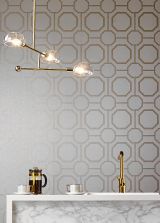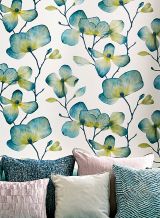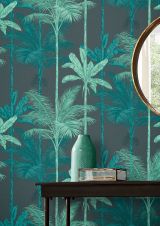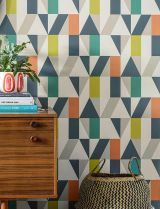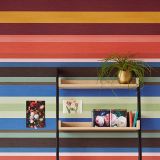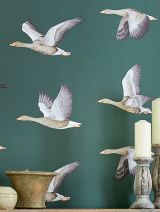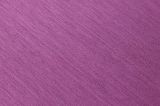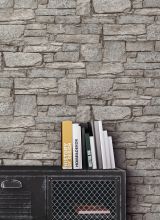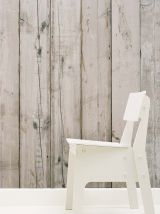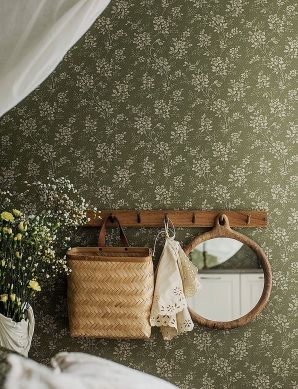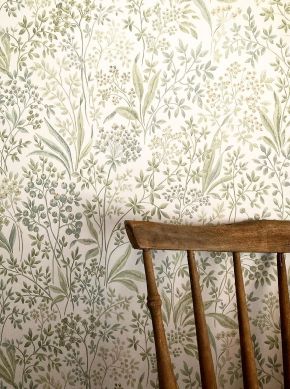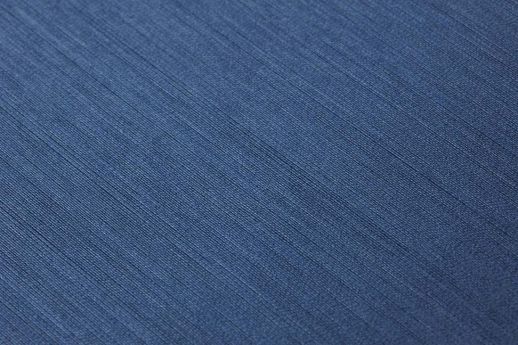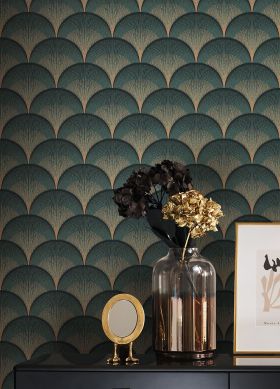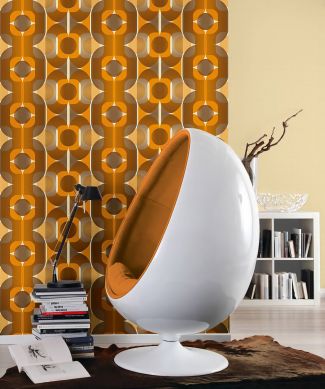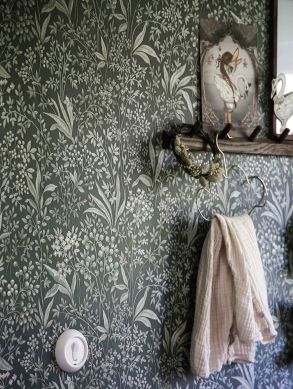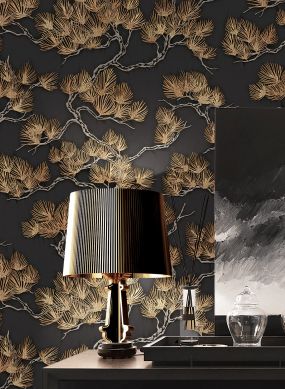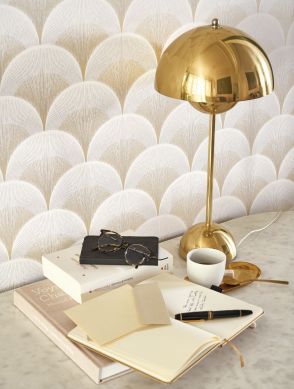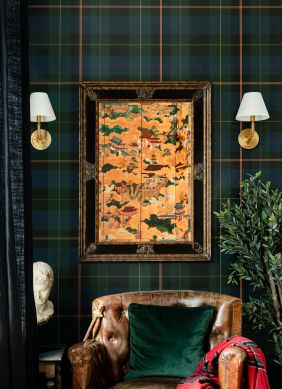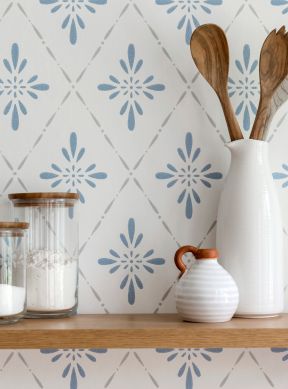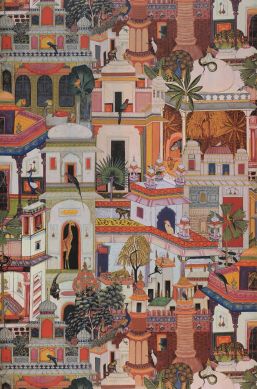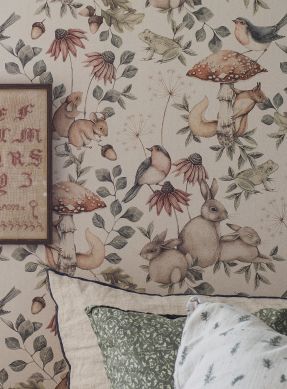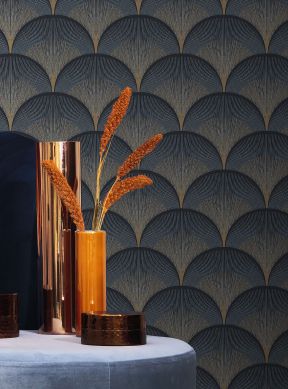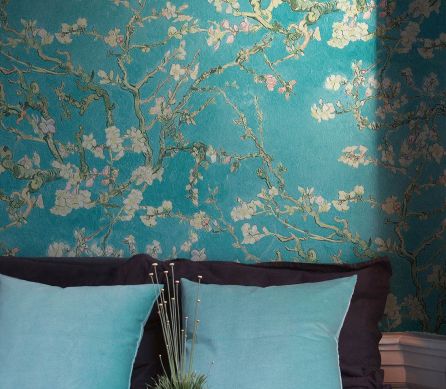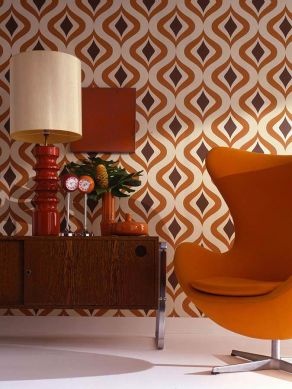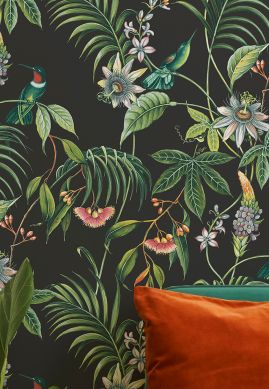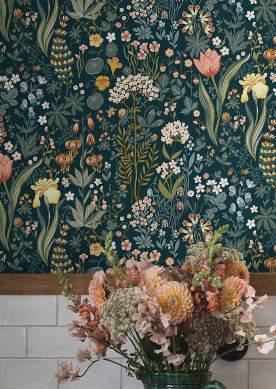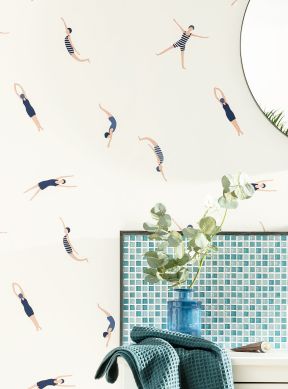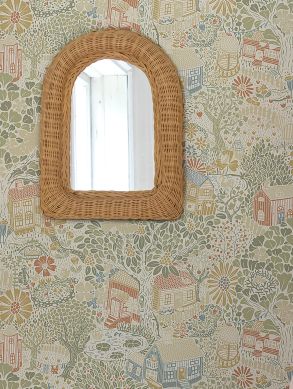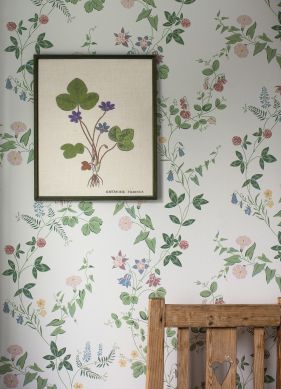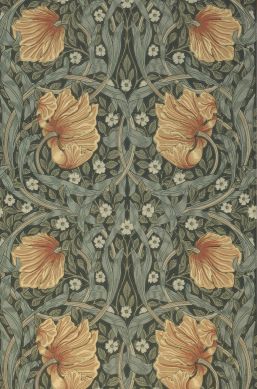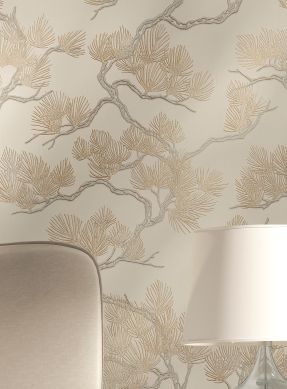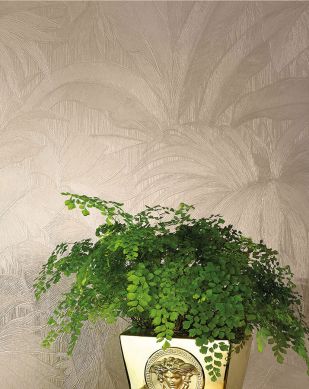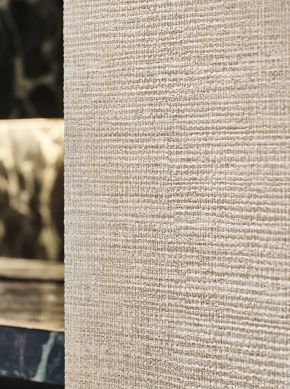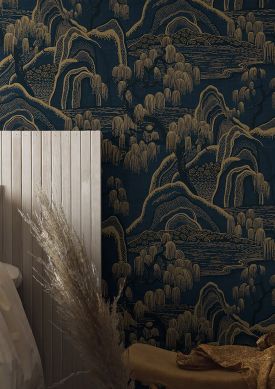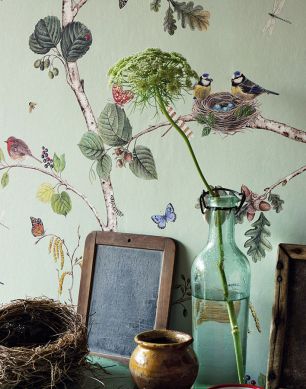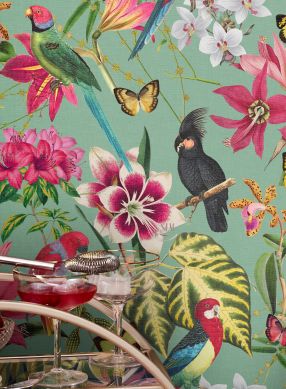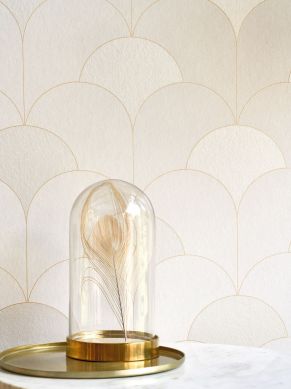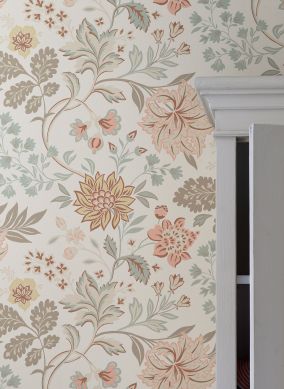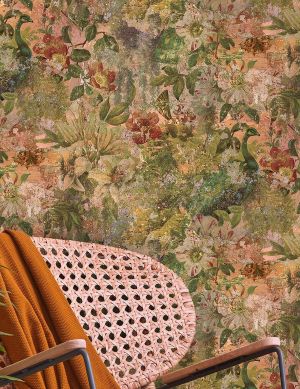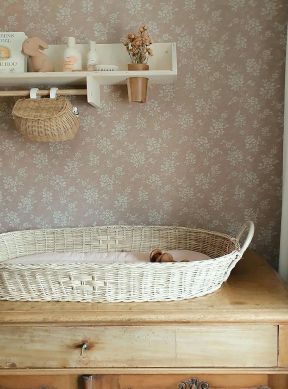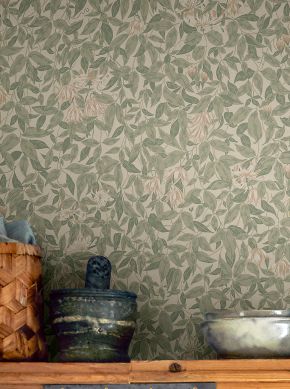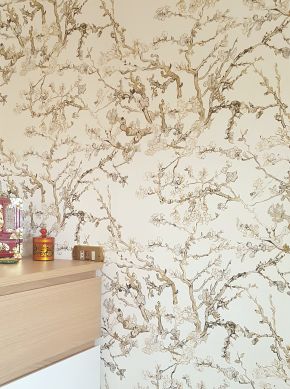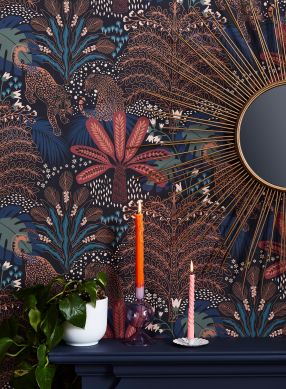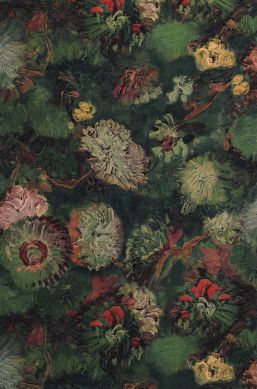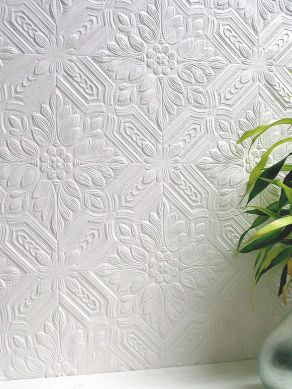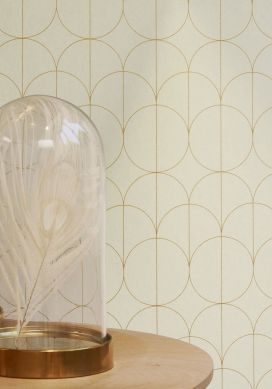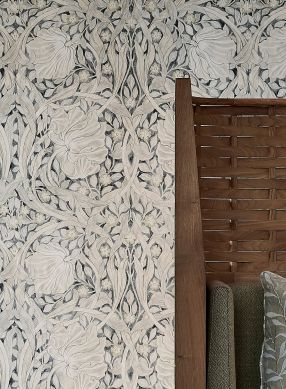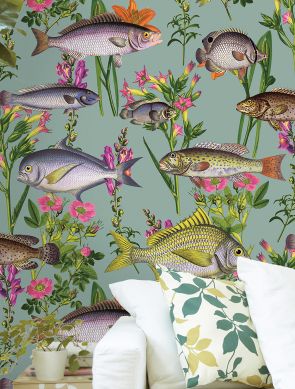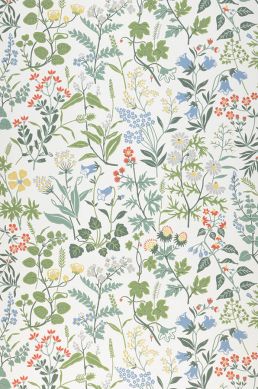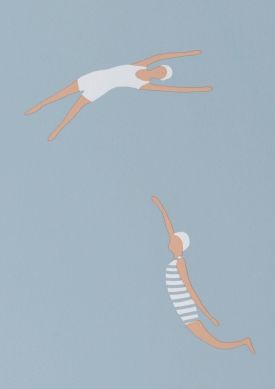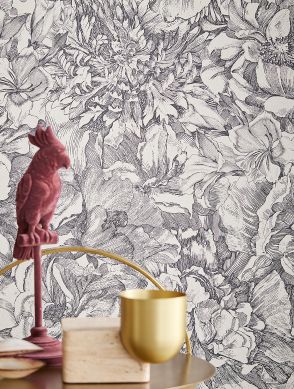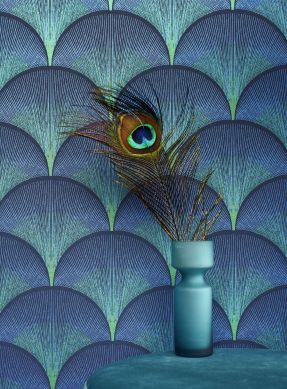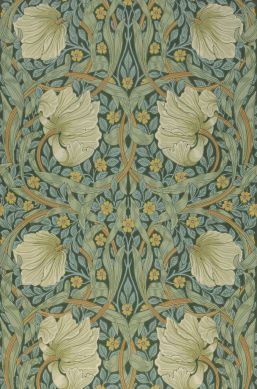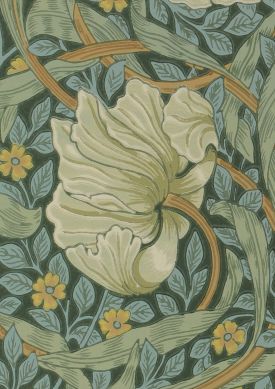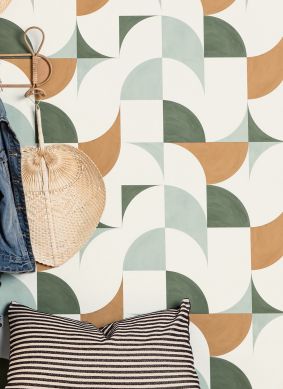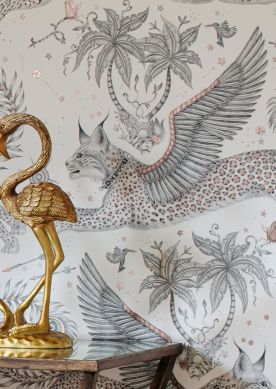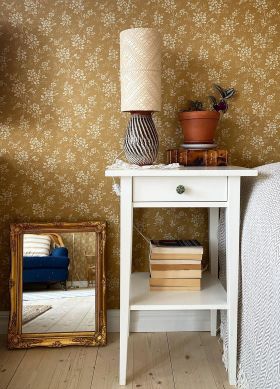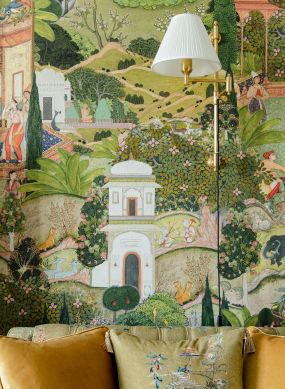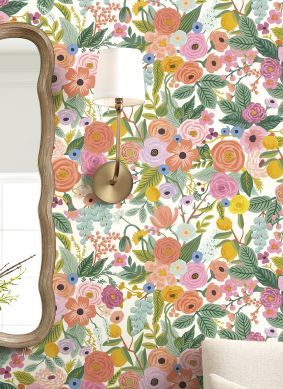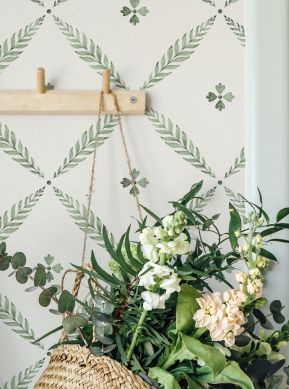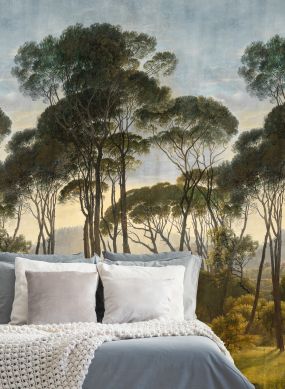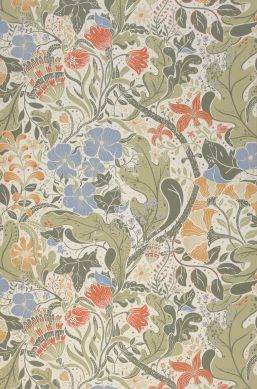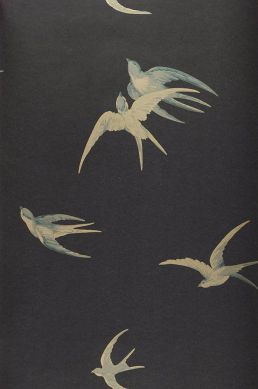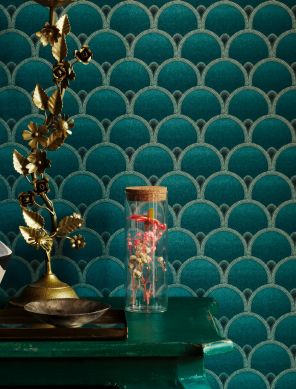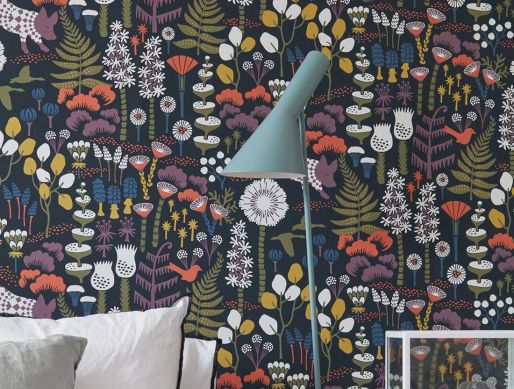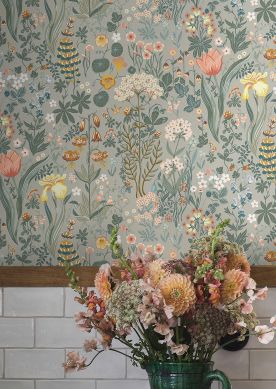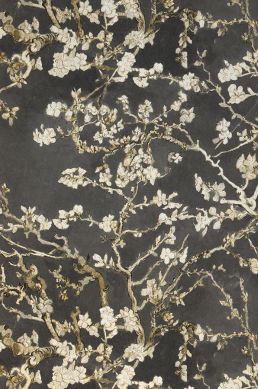Wallpaper patterns
Wallpaper models with patterns are creative tools which make many interior design dreams come true. Multidimensional patterns with large or small motifs appeal to various senses and play with eyes and mind.
Patterned wallpaper: The Guide
Pattern wallpaper provides an unparalleled plethora of design options. With visual and haptic pattern designs, it appeals to different senses and adds an individual touch to every room, making it appear larger or smaller. Wallpapers with patterns can be stimulating, exciting or calming. They promote creativity and support the learning and playing instinct in children. Patterns are as versatile and varied as life itself; they feature flowers, geometry or ornaments, among many other things. Wood, stone and metal can be reproduced in a deceptively realistic manner and reveal their own pattern structures.
Table of Contents
- What does the term pattern mean in the context of wallpaper design?
- What is a "pattern repeat" in terms of patterned wallpaper?
- In terms of pattern repeat, what should be considered during the process of hanging wallpaper?
- Which rooms are most suitable for wallpaper with patterns?
- Which walls are patterned wallpapers best suited for?
- How are different pattern sizes best used?
- How important is the light incidence in a room for the pattern selection?
- What are popular pattern effects for wallpaper?
- In wall design, what fits in with patterned wallpapers?
- Our tips: Tips for hanging pattern wallpapers
What does the term pattern mean in the context of wallpaper design?
The term "pattern" generally refers to a repetitive structure. With regard to wallpaper, the primary distinction is between visual and haptic patterns, which can also complement each other.
Visual patterns
Visual patterns are perceived by the eyes and trigger specific stimuli in the brain. These types of patterns come, for example, in the shape of graphics and drawings, as representational, abstract or stylised images, or with symmetries, optical illusions and in 3D. Motif pattern wallpapers depict an element, a picture or scenery in constant repetition. The arrangement of individual design elements results in a composite pattern.
Haptic patterns
Haptic patterns, smooth or structured, can be experienced via the sense of touch. They trigger associations such as soft, silky, warm or cool and have an impact on the effect of the wallpaper. Characteristics like natural and high-quality are also conveyed via haptic patterns. These include reliefs and embossing created by specific surface treatments and finishes. Furthermore, surface materials with classic material textures also have haptic patterns.
What is a "pattern repeat" in terms of patterned wallpaper?
For patterned wallpaper, the term "pattern repeat" refers to the repetition of the pattern at a certain spacing. This is identical with the size or height of the pattern motif.
Repetition of pattern
The pattern or the sequence of pattern elements always repeat at a certain distance (longitudinal/horizontal direction), which varies depending on the pattern motif. This spacing is based on the height of the pattern image. A pattern image can also consist of different elements that form a unit.
Scale of pattern
The pattern repeat corresponds to the size of the pattern, which is indicated on the wallpaper label (in metres or centimetres). European standard rolls, for example, sometimes have a repeat size of 53 cm. The roll width is also 53 cm, i.e. the pattern is square in this case. However, the repeat size usually exceeds the roll width.
In terms of pattern repeat, what should be considered during the process of hanging wallpaper?
Getting the pattern repeat right is essential for a harmonious pattern effect, which is why the relevant information is specified in the wallpaper label. Depending on the type of pattern, a distinction is made between seamless, straight and offset match. This must be taken into consideration when cutting the wallpaper.
Free Match
For patterned wallpaper with no pattern repeat, the pattern is not taken into account when cutting individual lengths of wallpaper. Cutting is done according to the required wall height. This means there is no waste at all. Vertically striped wallpaper models are a good example.
Straight Match
Once the first length of wallpaper has been cut to size, the next one is aligned so that the pattern matches or the same patterns are next to each other at the same height. This means that only a small amount of waste is produced with each subsequent length. The information on the wallpaper label would then be, for instance, 0.64/0 (0.64 = pattern repeat in m; 0 = no offset).
Offset Match
The pattern will be moved by about half the height of the pattern (pattern repeat) for the next length of wallpaper. This variation means an increase of waste depending on pattern spacing. The information on the wallpaper label would then be, for instance: 0.64/0.32 (0.64 = pattern repeat in m; 0.32 = offset in m).
Which rooms are most suitable for wallpaper with patterns?
Patterned wallpaper is a highly individual interior design tool. It is particularly well suited for living rooms, bedrooms, children's rooms and kitchens.
Living room
The living room is both a personal retreat and a representative space for guests and as such it should exude style and class, be it in an unconventional manner or according to certain tried and tested specifications. Striking, luxurious and elegant or very unusual pattern designs are great for this sociable space. The main objective is that walls, floor, ceiling and furnishings create a harmonious overall picture.
Bedroom
In the bedroom, the emotional component is particularly well served by patterned wallpaper. In the room that symbolises rest and relaxation the most, motifs that cater for personal preferences and romance are the best choice. These can be very sophisticated and luxurious, e.g. damask or Art Nouveau patterns. Or they might depict nature in its countless facets, for instance with animals or flora and fauna designs.
Children's rooms
Children's rooms are simply the perfect space for patterned wallpaper. In no other room are pattern motifs as functional and of high educational value. Kids of all ages use child-friendly designs in their own way, whether for active or passive learning, as a play template or for the creative input of ideas.
Kitchen
As the kitchen is very dynamic and characterised by busy activity, it benefits hugely from pattern wallpaper. Pattern wallpaper models can have a significant impact on the prevailing mood and help create the desired ambience. Favourite choices include stone and wood-look wallpapers and models with geometric or rural patterns.
Which walls are patterned wallpapers best suited for?
The type, size and colouring of the pattern design determine how many walls should be adorned with wallpaper. It might be best to just create a feature wall, or to choose two opposite walls or all four walls of the room.
Feature wall
Feature walls are practically always suitable since only one selected wall is covered with the patterned wallpaper. It is the best solution if it is intended as an eye-catcher or a "room divider", but also for large-scale patterns in small rooms. A feature wall is also suitable for darker pattern designs in rooms with little daylight.
Two opposite walls
Patterned wallpaper on opposite walls is an option if the pattern is designed to achieve a visual "stretching" or reduction of the room proportions. This way, a direct visual reference between the two walls is established.
All 4 walls of the room
If the size and arrangement/orientation of the pattern are suitable for the size of the room and the pattern colours are appropriate for the brightness of the room, all four walls can be adorned with wallpaper. Wallpaper models with intricate or dark patterns suit a large room with plenty of daylight, whilst a small room benefits from subtle, light and bright patterns.
How are different pattern sizes best used?
The pattern size can have a clear impact on the general appearance of a room. Wallpaper models with small- and large-scale patterns and patterns with a visually enlarging effect can be used to create specific effects.
Small patterns
Wallpaper models with delicate or small-scale pattern designs can be used in small and medium-sized rooms for one or more walls. If a room has several windows, small patterned wallpapers are more suitable because visual interruptions are less noticeable.
Large patterns
Large wallpaper patterns can optically reduce the width and height of the room. They are most effective on walls without windows, as an interruption of the pattern can be slightly overwhelming for the eyes. So that the effect of large patterns can unfold, a certain viewing distance should be provided - which is why a bigger room is of advantage.
Patterns to make the room appear more spacious
Horizontal block stripes are a classic pattern for a visual increase in space. The plasticity of a pattern also plays an important role as it can give the room more depth and width, making it appear larger. 3D effects and patterns with optical illusions are an excellent option.
How important is the light incidence in a room for the pattern selection?
The natural light incidence through windows or other sources of daylight determines whether the chosen pattern should have light or dark colours. If the wallpaper is exposed to direct sunlight, light-resistant models are required.
Light-coloured patterned wallpaper
Wallpaper models with bright pattern designs make rooms with little daylight appear friendlier, more open and wide. Incoming daylight is reflected by bright patterns, which makes it possible to literally bring light into the dark, even in small, narrow rooms or entrance areas.
Dark-coloured patterned wallpaper
Dark pattern wallpapers require sufficient, better still generous daylight incidence so that they don't appear gloomy and oppressive. If there is only one window, the dark wallpaper should be limited to a feature wall. The remaining walls should be in a light contrasting colour.
Indirect lighting can visually brighten a wall with a dark pattern wallpaper.
Light-resistant printing inks
The so-called light fastness or light-resistance of wallpaper refers to the colour fastness and the risk of the printing inks fading in strong sunlight. The light resistance of wallpapers is classified as Excellent, Very good, Good, Satisfactory and Sufficient. The rule is: the higher the requirements, the higher the classification.
What are popular pattern effects for wallpaper?
Wallpaper patterns can be given a special appearance via specific surface finishes. Matt, shimmering and glossy pattern effects are particularly popular.
Matt
In context with wallpaper, matt is a term from the area of paints and varnishes. It describes the absence of any gloss or sheen. A matt pattern prevents light from reflecting on the wallpaper surface, it looks very natural and is also often used to imitate certain traditional painting and printing techniques.
Shimmering
A shimmering surface structure is created by the use of iridescent colours. These are printing inks with pearlescent pigments which, in combination with light, create an iridescent rainbow or mother-of-pearl effect. Depending on the viewing angle, different colour sequences of the light source are perceived more clearly, which creates the shimmering effect.
Shiny
Glossy or shiny or even glittering pattern elements play with the light in many different ways. They add brightness and create a magical ambience. In wallpaper production, these effects are created by gloss embossing, glazes and high-quality metal foils. Glitter particles and materials such as glass beads create sparkling effects.
In wall design, what fits in with patterned wallpapers?
A harmonious overall picture increases the feel-good factor. Plain-coloured walls, striped wallpapers and textured models complement patterned wallpapers.
Plain-coloured walls
Wallpapers in coordinated plain colours which pick up a pattern colour, or those in neutral colours such as white and grey increase the effect of a patterned feature wall. Alternatively, walls painted in matching plain colours are a popular option.
Striped wallpaper
Stripes look very interesting as a counterpart to many pattern motifs, such as Baroque-style or damask, geometry or flowers, and offer a striking yet delicate contrast. The best effect is created when the colours of the striped wallpaper match those of the other pattern.
Textured wallpaper
Textured wallpapers are characterised by tactile surfaces and exquisite structures. Natural wallpapers, textile wallpapers, relief and embossed wallpapers are all included in this category. When it comes to combining textured wallpaper with patterned models, the main factor to consider is that the textured wallpaper should complement the patterned wallpaper and is available in a matching shade (or can be painted over in matching colours).
Our tips: Hints for hanging patterned wallpapers
How to cut patterned wallpaper?
First measure the height of the wall and add 5 cm each at the top and bottom. The roll length divided by the wall height plus half a pattern repeat equals the number of lengths that can be cut from one roll. The width of the wall divided by the width of the roll gives the number of lengths required per wall. The start of the pattern is aligned with the wall. It should start with a complete pattern image (pattern repeat). For large patterns it is recommended to start from the middle of the wall. The first length is cut to size according to the height measurement previously determined (including the additional 5 cm). The other lengths are cut in accordance with the size and offset of the pattern repeat.
How to hang non-woven patterned wallpaper?
Non-woven patterned wallpaper models are applied with the so-called wall-pasting technique. In contrast to paper-based models where the adhesive is applied to individual lengths which are than left to soak for a specific time, for non-woven wallpapers the paste is applied directly to the wall. The pre-cut lengths can be put up on the wall in a dry state, avoiding waiting (soaking) times. It is advisable to paste only the area required for the next length of wallpaper to prevent any time pressure.
How to glue patterned wallpaper around corners?
A distinction is made between the inside and the outside corners of a room. For inside corners, the right angle points inwards, for outside corners outwards. If thin wallpaper is to be applied to inside corners, the last length must be measured and cut to size with an overhang of approx. 2 cm. This length is put up on the wall and pressed into the corner with a suitable tool; the overhang is pressed onto the next wall. With thick wallpaper, the overhang should be about 5 to 8 cm. The next length on the adjacent wall should be overlapping. First, the roll width of the wallpaper is measured from the inner corner at the top and then a vertical line is drawn from top to bottom for a straight alignment. For thick wallpaper, a double-seam must be made to avoid bulging transitions.
If external corners are to be wallpapered with thin or thick wallpaper, the last length before the external corner is cut as for internal corners (as described above). This length of wallpaper is then placed on the last one (taking into account the pattern), laid around the corner and thoroughly pressed on. The next length can now either overlap or be aligned with the overhang of the outer corner length.
How to hang patterned wallpaper around windows?
The following instructions apply if you approach the window from the left (which is usually the case). The length that meets the window is cut as usual and aligned with the previous one, observing the pattern. Towards the window, the length is applied with an overhang so that the window reveal is covered. Now the overhang is cut with scissors or a cutter knife below the window lintel and at the upper edge of the window sill, so that the wallpaper can be folded inwards and pressed into the reveal.
The wallpaper in the reveal is then cut off flush with the window frame. The first length which follows above the window is cut according to the wall measurement plus an addition of approx. 4 cm. It is aligned with the previous strip with an overlap and in line with the pattern. Now the wallpaper is folded into the window reveal and the excess along the window frame and towards the ceiling is cut off. Below the windowsill, the process is the same (in terms of the overhang). In both cases, the overhang is removed with a double-seam cut to ensure a neat finish.
Can old wallpaper patterns simply be painted over?
Smooth wallpaper without coating or sealing or non-woven wallpaper can usually be painted over without any problems. However, it is not possible to paint over patterned wallpaper if it has special finishes, e.g. coatings or foils, or if the surface is made of natural or textile materials or glass beads. Moisture-permeable patterned wallpaper with embossed structures or reliefs can be painted over, but more paint is required in order to achieve an even cover. For wallpaper patterns with intense or darker colours, multiple coats of paint or primer are required to make sure the pattern doesn't show through. A new coat of paint is only recommended if the old wallpaper still adheres firmly to the wall.

